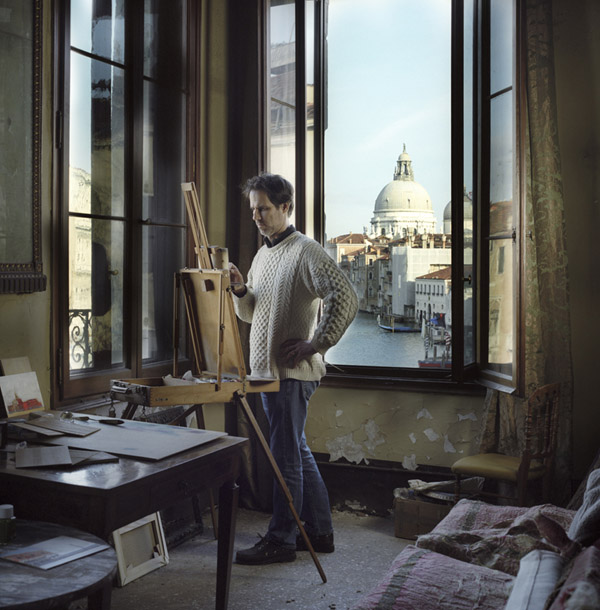|
Roger de Montebello
born Paris 1964
lives in Venice
Biographical notes:
Roger de Montebello is a French-American painter who was born in Paris in 1964. After studying the fundamentals of drawing and painting at the Facultad de Bellas Artes in Seville (1984-1985), he continued his artistic education (art history, philosophy and painting) at Harvard University, where he graduated with a Bachelor of Arts in 1988. Montebello's first exhibition was in Paris in 1992. That same year he set up his atelier in Venice, where he continues to live and work. The year 2011 saw him participate in the Venice Art Biennale with an exhibition called Montebello-Megachromia. After a series of personal shows, mostly in Paris and London, in 2017 the Museo Correr in Venice dedicated to him a solo exhibition, curated by Jean Clair and Gabriella Belli. In 2021 the Espace Muraille gallery, in Geneva, exhibited his "Porte delle Terese".

Montebello in Venice, 2010 photo Valerio Vincenzo
Personnal exhibitions:
2023 Galerie Artismagna, Paris
2022 Ancienne Eglise, Maisons-Laffitte, France (curated by Guido Brivio)
2021 Galerie Espace Muraille, Geneva
2017 Museo Correr, Venice (curated by Jean Clair and Gabriella Belli)
2013 Artheme Galerie, Paris
2012-2013 Adler, Gstaad
2011 Paris Nuit Blanche
2011 Artheme Galerie, Paris
2011 Venice Biennale
2011 Adler, Geneva
2011 Galerie Huit, Arles
2010 Bernard Chauchet Contemporary Art, London
2010 Artheme Galerie, Paris
2009 Artheme Galerie, Paris
2005 Galeria Estandarte, Madrid
2004 Gallery Holly Snapp, Venice
2004 Galerie Pelar, Newport, New York
2003 Bernard Chauchet Contemporary Art, London
2002 Artemis Fine Arts, Paris
1999 W.M. Brady & Co., New York
1996 Alliance Française, Venice
1993 Services Culturels de l'Ambassade de France, New York
1992 79 rue La Boetie, Paris
|